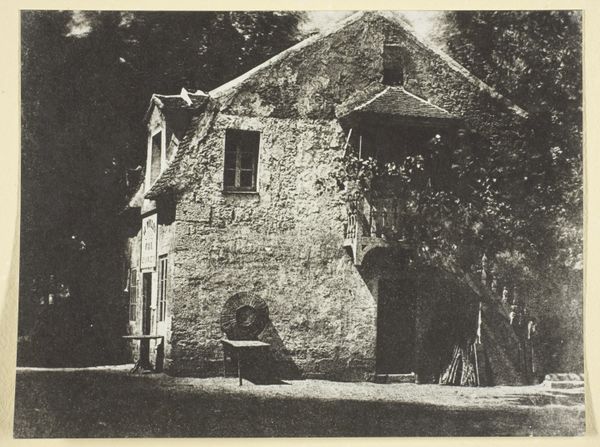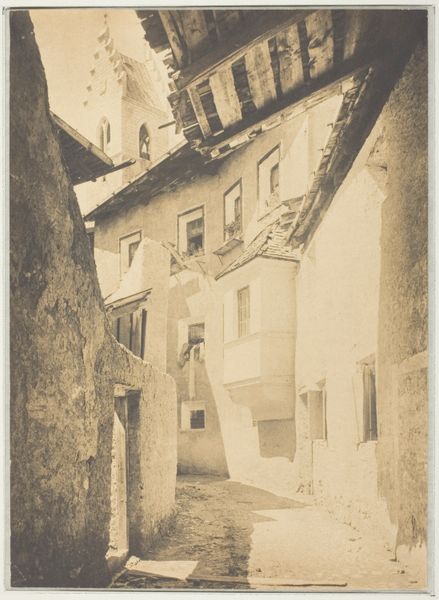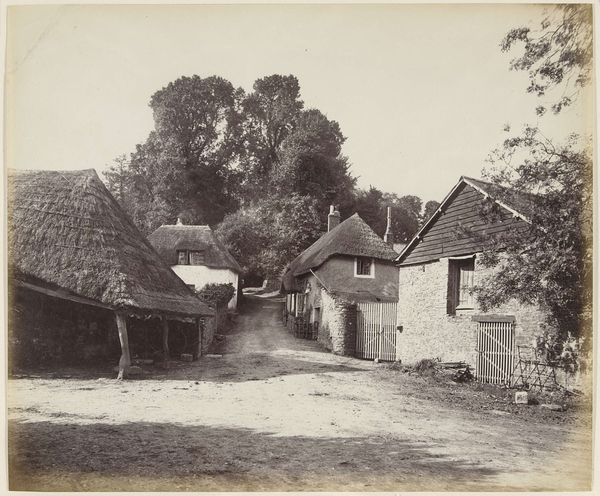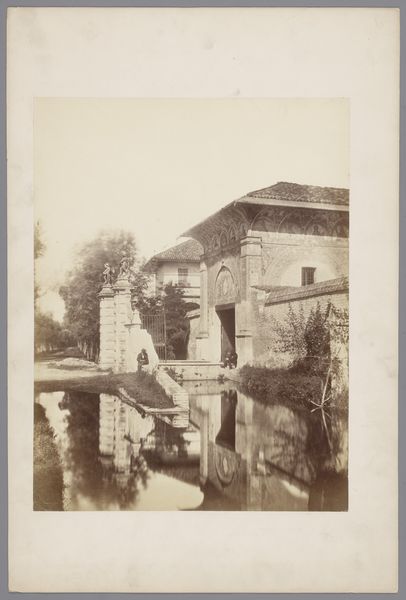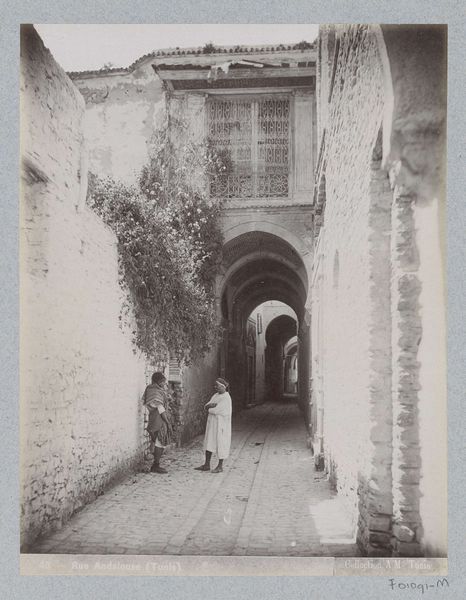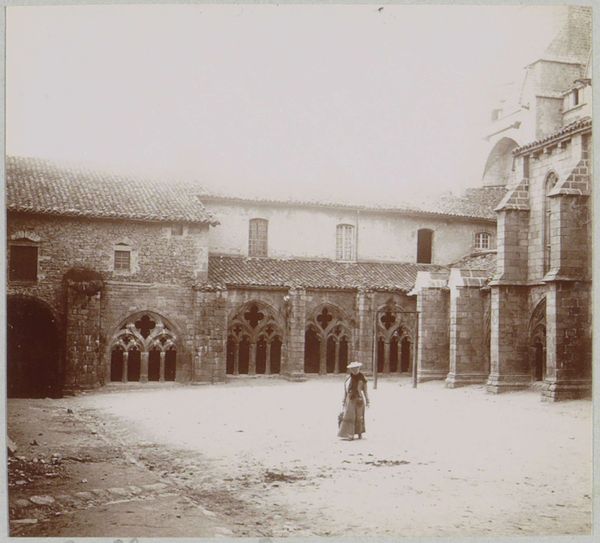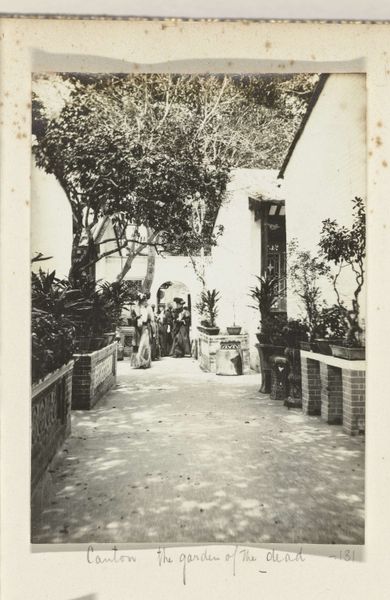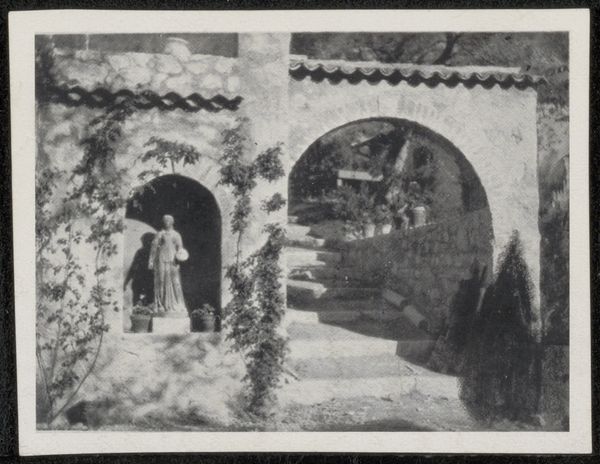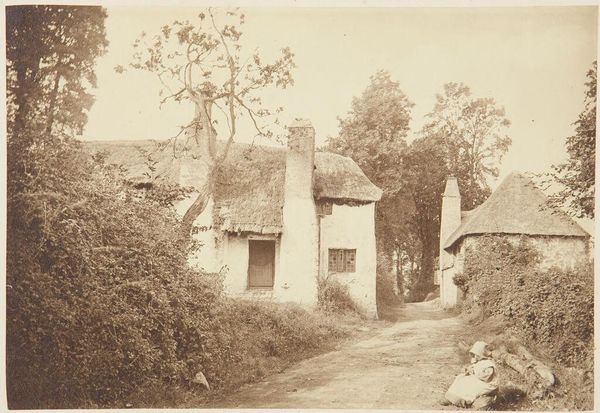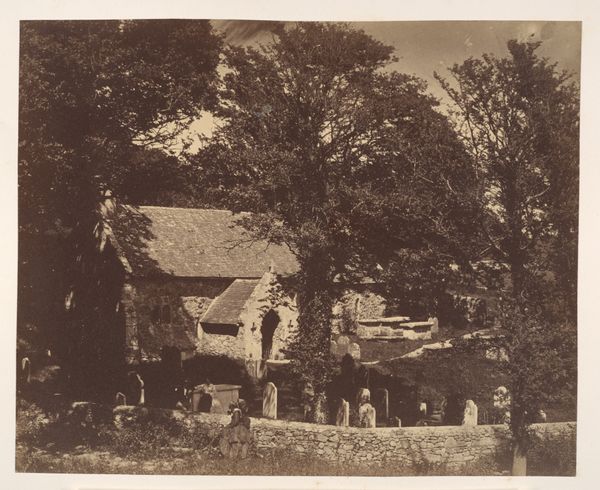
photography
#
pictorialism
#
landscape
#
photography
#
genre-painting
Dimensions: height 70 mm, width 82 mm
Copyright: Rijks Museum: Open Domain
Curator: Delizy’s photograph, "Twee vrouwen in een straat in Enval" from 1904. The sepia tones just immediately lend it such a soft, almost dreamy quality, don’t you think? Editor: It’s like peering into the past through gauze. Those heavy shadows and blurred details feel romantic, nostalgic even. Is it supposed to evoke some past utopia? Curator: Well, pictorialism, the movement Delizy was part of, often used photography to emulate painting, aiming for artistic effect over crisp realism. It’s less about accuracy, more about… atmosphere. The composition leads us right into the frame between two overhanging dark canopies that are casting shades over the stone architecture and focusing our sight towards the center where two women appear. Editor: The way that light falls, bathing those women in this ethereal glow... I see that emulation of paint; the texture’s almost like an impressionist painting but with those strange contrasts only obtainable via photography. And "genre-painting," the listing claims! The public’s taste certainly had to meet halfway. How was something like this exhibited, do you think? Curator: Think salon culture. These photographs were shown as artworks. They were framed and hung, often competing with paintings for recognition. The Pictorialists actively fought for photography’s place in the artistic establishment. It became recognized as its own art medium not too long afterward. Delizy here seemed more fascinated with timeless moments that almost escape reality. Editor: The image does create an incredible distance, but not so much temporal, more like a detachment and, honestly, a sense of alienation and, maybe, even displacement. The women almost feel like apparitions or figments, with very indistinct facial characteristics that can lead anyone to have an out-of-body, introspective episode. Is it then the social conditions that make this a successful photo? Curator: I tend to veer towards its own world-making as successful; something deeply individualistic, intuitive to create. However, that is definitely a reading to be heard in light of all social considerations as art making is, inevitably, connected to the world’s politics. Ultimately, it’s a striking study of light, form, and human presence in a constructed landscape, inviting both the eye and the imagination to linger. Editor: Indeed, it provides food for thought in the current discussions about how societies shape artistic visions—and artistic pieces create their own ripples within society!
Comments
No comments
Be the first to comment and join the conversation on the ultimate creative platform.
